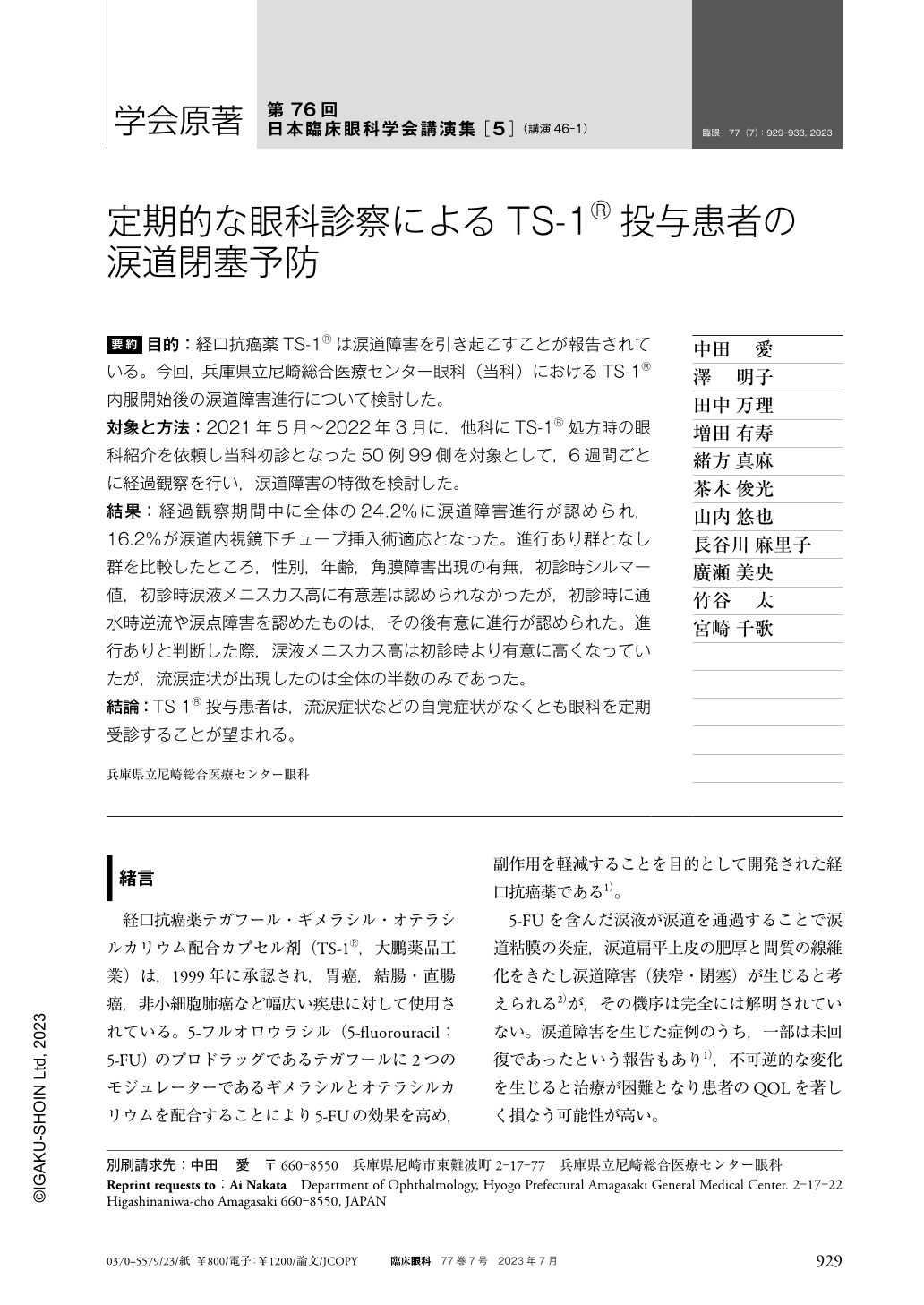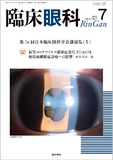Japanese
English
- 有料閲覧
- Abstract 文献概要
- 1ページ目 Look Inside
- 参考文献 Reference
要約 目的:経口抗癌薬TS-1®は涙道障害を引き起こすことが報告されている。今回,兵庫県立尼崎総合医療センター眼科(当科)におけるTS-1®内服開始後の涙道障害進行について検討した。
対象と方法:2021年5月〜2022年3月に,他科にTS-1®処方時の眼科紹介を依頼し当科初診となった50例99側を対象として,6週間ごとに経過観察を行い,涙道障害の特徴を検討した。
結果:経過観察期間中に全体の24.2%に涙道障害進行が認められ,16.2%が涙道内視鏡下チューブ挿入術適応となった。進行あり群となし群を比較したところ,性別,年齢,角膜障害出現の有無,初診時シルマー値,初診時涙液メニスカス高に有意差は認められなかったが,初診時に通水時逆流や涙点障害を認めたものは,その後有意に進行が認められた。進行ありと判断した際,涙液メニスカス高は初診時より有意に高くなっていたが,流涙症状が出現したのは全体の半数のみであった。
結論:TS-1®投与患者は,流涙症状などの自覚症状がなくとも眼科を定期受診することが望まれる。
Abstract Purpose:This study was conducted to investigate the development of lacrimal drainage disorders(obstruction or stenosis)secondary to peroral S-1® at the Hyogo Prefectural Amagasaki General Medical Center.
Cases and Method:This study included 50 patients(99 eyes)starting S-1® treatment. Ophthalmologic examinations were performed every 6 weeks to determine the clinical characteristics of lacrimal drainage disorders.
Results:Twenty-four eyes(24.2%)showed development of lacrimal drainage disorders, and 16 eyes(16.2%)were treated by intubation of a silicon tube. Patients with regurgitation or punctal disorders(atresia or stenosis)at the initial visit were more likely to have developed a lacrimal drainage disorder. Sex, age, the development of corneal disorders during the follow-up period, Schirmer test scores or tear meniscus heights at the initial visit were not associated with the development of lacrimal drainage disorders. The patients who developed a lacrimal drainage disorder showed significantly higher tear meniscus heights than initially, but only half of the patients developed epiphora.
Conclusion:Patients treated with S-1® should undergo regular ophthalmologic examinations even in the absence of subjective symptoms such as epiphora.

Copyright © 2023, Igaku-Shoin Ltd. All rights reserved.


